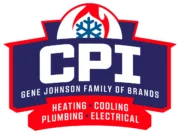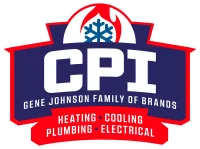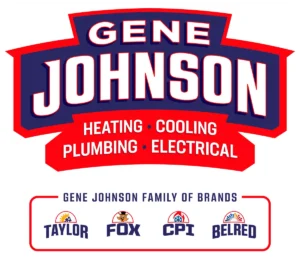Heat Pump Repair in Sedro-Woolley, WA
Need help with your heat pump problems?
Call (360) 822-9306 for immediate service in Sedro-Woolley, WA.
There’s nothing more frustrating than stepping inside to escape the summer heat, only to find your heat pump has decided to take a permanent vacation. A broken system quickly turns your home into a sweatbox while energy bills skyrocket from the strain. Whether it’s an electrical gremlin, frozen coil, or airflow issue playing Grinch, the HVAC pros at CPI have seen and fixed it all.
With decades of experience, our technicians combine old-school diagnostic methods with modern testing equipment to get to the bottom of heat pump woes. We’ll walk you through every step, explaining the problem, repair plan, and pricing upfront – no surprise fees. From simple recharges to major overhauls, our workmanship is backed by ironclad warranties. Don’t suffer through another day of discomfort and inefficiency. Call CPI at (360) 822-9306 to get your heat pump back into peak performance shape!
CPI’s Heat Pump Repair Process in Sedro-Woolley, WA
When your heat pump decides to throw in the towel, every second feeling that sweltering discomfort adds up quickly. That’s why the HVAC experts at CPI follow a thorough yet efficient repair process – resolving your cooling crisis and restoring comfort pronto.
The Inspection
To kick things off, one of our seasoned techs arrives onsite and gets up close and personal with your heat pump system. We’re not talking about a quick visual once-over either. Our professionals utilize decades of experience combined with modern testing methods to systematically examine every component and connection – from thermostat operations down to refrigerant levels and airflow. We dig deep to identify the real root cause, not just chase symptoms.
The Game Plan
Once the culprit is identified, it’s time for a consultation. Your CPI tech walks you through their findings, explaining the issue clearly and what’s needed to fix it right. Whether a simple recharge or major component replacement, you get an upfront, straightforward pricing estimate to approve before any work begins. No surprise fees here.
Repair Execution
With your go-ahead, we get to work resolving that heat pump headache quickly yet meticulously. We leverage our training and experience to complete repairs flawlessly per manufacturer specs – from proper refrigerant handling to electrical reconfigurations. We sweat the small stuff to ensure a repair that lasts.
Testing & Warranties
Before we can call that repair complete, the system must pass our rigorous testing process. We monitor refrigerant pressures, airflow, thermostat operations – you name it – verifying everything cycles at peak performance and efficiency. Only then can you feel confident. And we back our workmanship with robust warranties.
From our initial arrival to the final system sign-off, CPI has you covered throughout the entire process. Don’t sweat it another second – call (360) 822-9306 today!
Why Does My Heat Pump Make a Loud Banging Noise When It Turns On?
Few sounds are more alarming than your heat pump kicking on with a thunderous bang, immediately setting visions of costly repairs dancing through your head. While that jarring noise can certainly indicate a serious underlying issue, there are some common culprits that may simply require minor adjustments.
Loose Casing Panels
One of the most frequent causes of that startling banging relates to your heat pump’s outer casing panels. Over years of operation and exposure to the elements, those metal panels can slowly work themselves loose from the unit’s frame. When the system cycles on, the intense vibrations cause the panels to violently shake and rattle against the frame until pressure equalizes.
While this racket may sound catastrophic, it’s often an easy fix. Simply tightening down any loose screws or clips securing those outer panels in place can eliminate the banging almost instantly. Applying some protective weather stripping between components also helps reduce excess vibrations.
Failing Motor Mounts
Your heat pump’s compressor and fan motors rely on rubber mounting pads to absorb operational vibrations and prevent excessive shaking. However, those pads deteriorate over time due to heat, cold and general wear and tear. Once they stiffen or crack, the motors lack that cushioning effect.
When your system kicks on, those rigid motors can violently jolt against their mounts until settling into their normal operating cycle. Replacing failed or deteriorated motor mounts restores that vibration-dampening protection to eliminate the banging. Routine preventative maintenance helps catch this issue before it escalates.
Obstructed Blower Wheel
Inside your heat pump’s indoor air handler cabinet, a blower wheel or fan spins to circulate cooled or warmed air throughout your ductwork. Any obstructions or debris contacting that blower wheel during startup can create an ear-splitting banging that radiates through your vents.
Dislodged screws, loose insulation or even children’s toys can easily find their way into that blower compartment and wreak havoc. Shutting off power and carefully removing any obstructions allows that blower wheel to spin freely and quietly once again.
While a loud banging at startup may set off alarm bells, it doesn’t necessarily foreshadow an imminent heat pump failure. With some basic inspection and adjustments, that maddening noise could be an easy fix. If the banging persists after checking these common issues, it’s wise to schedule a professional service call to investigate further.
What Should I Do If My Heat Pump Smells Like Something Is Burning?
Few things raise more immediate concern than catching a whiff of something burning coming from your home’s heating and cooling system. While that burnt odor could indicate a relatively minor issue, it may also signal a serious fire hazard that demands prompt attention. Here’s what to do if your heat pump starts emitting those unsettling smells.
Step 1: Turn Off the System Immediately
At the first hint of a burning smell, turn off your heat pump at the thermostat and shut off power to the outdoor condenser unit at the circuit breaker or disconnect box. Continuing to operate the system risks further damage and potential safety hazards.
Step 2: Thoroughly Inspect Components
Once the system is safely powered down, carefully inspect all accessible components – the indoor air handler, outdoor condenser unit, ductwork connections, etc. Look for any signs of scorching, melting, or other heat damage that could indicate an electrical issue or overheating parts.
Step 3: Check for Obstructions
Burning odors can also result from obstructions blocking airflow and causing components to overheat. Ensure nothing blocks the outdoor condenser fan or indoor blower. Also check air filters and ductwork for excessive dirt buildup restricting air circulation.
Step 4: Schedule Professional Service
If you cannot immediately identify the source of the burning smell or signs of significant damage, it’s best to schedule service from a certified HVAC professional like the experts at CPI. Attempting DIY repairs on a compromised heat pump system can be extremely dangerous.
Step 5: Prepare for the Service Call
To help the technician quickly diagnose the issue, document when you first noticed the burning smell, if it happens only during heating/cooling cycles, and any other details. Also ensure they have clear access to all system components.
While a burning odor emanating from your heat pump can certainly raise alarm bells, staying calm and following these steps provides the safest path forward. With prompt action and professional service, many issues can be resolved before any serious damage occurs.
Of course, CPI’s certified technicians are always here to assist with any heating or cooling odor concerns.
How Can I Tell If My Heat Pump’s Compressor Is Failing?
Among the most crucial components in any heat pump system, the compressor plays a vital role in the refrigerant cycle that facilitates heat transfer for cooling and heating your home. When this hardworking piece of equipment starts faltering, it compromises the entire system’s performance and efficiency. Addressing compressor issues promptly prevents further damage and costly repairs down the road.
There are several telltale signs that may indicate your heat pump’s compressor is on its way out:
Diminished Heating/Cooling Power
As the compressor degrades, it loses the ability to adequately circulate refrigerant through the system. This disrupts heat transfer, leading to warm air blowing from vents during cooling mode or insufficient heating capabilities. Rooms may feel unevenly heated or cooled as well.
Loud Operating Noises
Compressors rely on a number of internal mechanical components like pistons, rods, and valves. As these parts become worn or damaged, they produce loud grinding, clanking, or screeching noises during operation that are hard to miss.
Frequent Cycling
When a compressor starts failing, it must work harder and cycle on/off more frequently in an attempt to meet temperature demands. This excessive cycling puts added strain on the entire system while driving up energy costs.
Refrigerant Leaks
Compressor valve leaks or cracks in the housing can cause refrigerant to slowly escape from the sealed system over time. Diminishing refrigerant levels impact cooling capabilities and efficiency.
Circuit Breaker Trips
An overtaxed, failing compressor draws significantly more electrical current to operate. This excessive draw can cause circuit breakers to trip as a safety precaution against overheating wires and fire hazards.
If you notice a combination of these red flags, it likely indicates an aging or damaged compressor in need of professional repair or replacement. Left unaddressed, that faulty component will eventually burn out completely, requiring an expensive emergency replacement.
As with any suspected heat pump issue, the wisest approach is to schedule an inspection from one of CPI’s certified HVAC technicians at the first signs of trouble. Our experts can quickly diagnose compressor problems and recommend the most cost-effective solution before minor issues escalate into a full system breakdown.
Is It Normal for a Heat Pump to Run Constantly in the Winter?
While it’s expected for heat pumps to work overtime during those bitter Sedro-Woolley winter deep freezes, nonstop operation with zero breaks is a surefire sign something’s amiss. Let’s explore some potential reasons why your system may run excessively and when it’s time to call in the pros.
Defrost Mode
It’s perfectly normal for heat pumps to cycle into defrost mode periodically as they labor to provide warmth on bone-chilling days. These temporary cycles help prevent ice buildup on the outdoor coil that can restrict airflow and impact heating performance.
During defrost, you may notice the outdoor fan stops while the indoor air handler keeps chugging, circulating heated air throughout your home. These pauses typically last 10-15 minutes before heating resumes as usual.
System Sizing Issues
If your heat pump wasn’t properly sized for your home’s square footage during installation, it may struggle to keep up with heating demands when temperatures really plummet. An undersized unit essentially runs wide open 24/7 at maximum output, attempting to satisfy thermostat settings it can’t quite achieve.
Air Flow Woes
Airflow restrictions from clogged filters, closed vents/dampers, or leaky ductwork can similarly force excess runtimes. With obstructed air circulation, your heat pump runs overtime trying to effectively distribute that heated air throughout your home. Clearing those blockages often resolves the issue.
Thermostat Shenanigans
On the thermostat front, faulty sensors or incorrect setting inputs can likewise cause heat pumps to cycle erratically. The system may not receive proper signals to take a breather once target temperatures are satisfied.
Refrigerant Levels
Low refrigerant levels resulting from leaks make it harder for the heat pump to transfer thermal energy efficiently between indoor/outdoor units. This causes more frequent cycling and longer continuous runtimes as the system struggles to compensate for that lost efficiency.
While a bit of extra effort is expected from your heat pump in winter, nonstop operation with zero downtime indicates an underlying issue in need of professional attention. Excessive runtimes accelerate wear and tear while driving up utility costs.
The HVAC experts at CPI can quickly diagnose any issues forcing your heat pump into overdrive. From refrigerant recharges to thermostat recalibrations, we’ll restore proper cycling and peak efficiency.
Why Is My Heat Pump Not Switching from Heating to Cooling Mode?
As winter fades and temperatures start climbing, you rely on your heat pump to seamlessly transition from providing warm air to delivering crisp, cooling relief. However, if that system refuses to switch over from heating to cooling mode, you’ll quickly find yourself stuck in an overly toasty indoor environment. Addressing this malfunction promptly prevents discomfort and potential equipment damage.
There are several potential reasons why your heat pump may not be shifting over to air conditioning mode as it should:
Thermostat Issues
Your thermostat serves as the control center, signaling your heat pump when to switch between heating and cooling operations based on programmed temperature settings. Thermostat wiring issues, drained batteries, or incorrect configuration can prevent it from communicating those mode change commands properly.
Reversing Valve Failure
This refrigerant control component reverses the flow direction allowing the same system to supply either heated or cooled air as needed. Stuck or leaky reversing valves get stuck in their last setting, preventing the switch to cooling mode.
Clogged Air Filters
Excessively dirty air filters restrict airflow over the indoor coil, causing it to freeze over. This ice buildup trips a safety switch that prevents the heat pump from shifting to cooling to protect the compressor from damage.
Refrigerant Leaks
Both heating and cooling operations rely on an adequate refrigerant charge to facilitate heat transfer. Leaks that deplete refrigerant levels can cause the system to operate in heating mode only as a protective measure.
Control Board Failures
The heat pump’s main control board is the brain coordinating all operations, including mode switching based on thermostat signals. Electrical issues like circuit board failures prevent those changeover commands from executing properly.
If you’ve confirmed thermostat settings are correct yet your heat pump still won’t switch to cooling mode, it’s wise to schedule professional diagnosis and repair. Experienced HVAC technicians can quickly pinpoint the root cause and implement a lasting solution.
Ignoring this switching issue allows excess strain to build up on system components, leading to larger headaches and expenses down the road.
Your Sedro-Woolley Heat Pump Allies
When the summer sun beats down or winter winds howl, you need a heat pump system you can truly rely on to maintain complete indoor comfort. At CPI Plumbing, Heating, Cooling & Electrical, delivering that reliable climate control for Sedro-Woolley area homeowners is our specialty.
Our certified HVAC technicians take immense pride in their heat pump expertise honed over decades in the field. We approach every service call with a keen eye for detail and a customer-first commitment to quality workmanship. From complex repairs to routine maintenance, you can expect a meticulous job completed right the first time.
But our team is more than just skilled technicians. We’re heat pump partners dedicated to ensuring you understand every step of the process. We walk you through detailed diagnoses, all recommended services with upfront pricing, and final system testing. Our goal is to make you feel empowered and informed as the ultimate decision-maker.
Whether you need to restore lost cooling power on a sweltering day or optimize heating capabilities for winter, CPI has your back. We’ll quickly diagnose the root issue and implement a solution designed for maximum performance, efficiency, and longevity. Our workmanship provides peace of mind backed by robust warranties.
So if your heat pump system isn’t delivering the comfort you deserve, why wait? The CPI crew is ready to answer your call and get your indoor oasis restored quickly. Reach out to us today at (360) 822-9306 to schedule your exceptional heat pump service!


